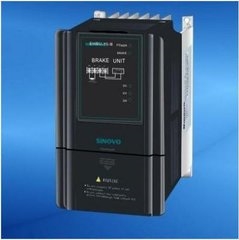What are the functional requirements of high frequency inverter
2022-9-6
As our right-hand man in mechanical operations, high-frequency frequency converter not only greatly speeds up the working ability of related equipment, but also liberates our hands and reduces our work pressure. Now it is widely used. We can see it not only in factories, but also in construction sites, enterprises and other places with different functions of high-frequency inverters. High-frequency inverters have many functional requirements, let us learn more about high-frequency inverters:

What are the functional requirements of high frequency inverter
(1) The control method of the high-frequency inverter varies slightly depending on the model. The most common control method is V/F control, which is more convenient for operation and easy to use.
(2) High-frequency inverter needs terminal control as the command source, two-wire terminal control: FWD is forward running (FWD input), REV reverse running (REV input), these professional operations, we can carry out through the manual To learn and understand, it is necessary to pay attention to fully understanding before actually using it.
(3) The frequency source of the high-frequency inverter is set by analog quantity (the output of the computer control board is 0~10VDC), which fully embodies the magic of modern technology. Now only need to input the frequency command from the VC2 port to control the high-frequency inverter. It is easy to control and easy to operate, which improves the efficiency.
(4) As the name suggests, the high-frequency inverter has extremely high working efficiency because its operating speed is generally 0-21000r/min, and the operating frequency of the converted inverter can reach up to 350Hz, which is equivalent to the operating frequency of a secondary high-speed motor. Compared with the traditional frequency converter, this point has been greatly improved.
(5) The acceleration and deceleration time of the high-frequency inverter can be based on the customer's own needs, which fully reflects the protection of the user. Now the first-class high-frequency inverter on the market is generally 20-30s, because the operating speed is relatively high, so It needs to be equipped with a frequency converter specially used for the braking unit in order to work more safely.
In addition to the functional requirements mentioned above, high-frequency inverters also have functional requirements such as fault output signal (relay output) and fault reset signal (RST input), which are more in line with the needs of users. High-frequency inverters are working hard to bring convenience to people, and due to the improvement of technology, its functions are constantly increasing and improving.









